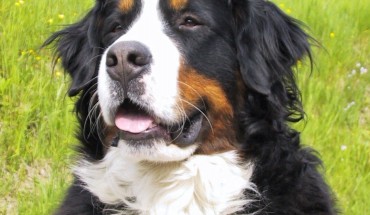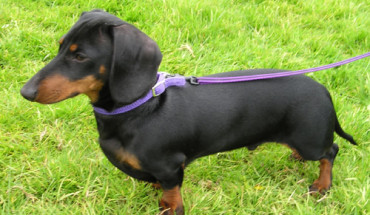
One of the reasons dogs make such great pets is because they connect with us in a deeply personal way. Well, according to pet specialists James Wellbeloved, this is because they are actually speaking to us. Okay, so they can’t use words, but they make up for it with a wide range of dog body behaviours, which, when you put them together, communicate how they are feeling.
This is important information for any owner to understand because it doesn’t just tell us that our dog is happy, but helps us understand if something is bothering them, too.
-
Happy
You will instinctively know when your dog is happy because it is impossible to look at them and not feel cheerful. Their wagging tail, bouncy and playful behaviour, and eagerness to cover you in slobber are everyday indicators.
However, even a dog that sits and stares at you can be a sign that they are happy and comfortable; this is normally an indicator that your dog enjoys being around you and is simply waiting to be able to engage with you in some way.
-
Sad
While we may never know if dogs experience depression, they are certainly capable of sadness. Inactivity (especially in otherwise healthy dogs), ears drawn close to the head and an absence of any tail wagging are all key indicators of sadness and that you need to think about changing things up for your dog.
Unless your dog is sick, this behaviour is probably happening because your dog isn’t getting enough stimulation, exercise and/or time with you. Pet them and praise them, and take time to give them mental stimulation, too, by playing with toys and training them.
Remember, dog treats should not be a substitute for your dog’s main meals, but healthy treats, including fruit and veg, are a great way to reward your dog and to encourage them to learn desirable behaviours without putting their delicate diet at risk.
-
Afraid
When dogs feel stress and fear, they have a number of ways of communicating this to you. Slow blinking, frequent licking of lips, and yawning are all indicators you should be wary of, especially as they are subtle.
As your dog becomes increasingly anxious, they may also start to avoid eye contact with whatever is causing the fear reaction and hunch their backs, too, with their tail between their legs, to appear small.
-
Aggressive
The reason it is so important to understand the subtle signs of anxiety is because, if your dog feels trapped or like he or she has no other option, fear leads to aggressiveness. Few dogs are naturally aggressive. Rather, dogs that are quick to aggression are simply used to their owner missing the harder-to-spot signs of anxiety, so they go straight to holding their gaze, bearing their teeth, and barking.
-
Dominant/Submissive
It is natural for pack animals, like dogs, to need to establish which animal is the alpha in any given situation. Dominant dogs will have raised fur, rigid muscles and maintain eye contact, but they will also wag their tail and show some signs of playfulness.
Equally, while a submissive dog might appear small or lie on their back, if they feel confident, they will do this while crawling towards the dominant dog and try to lick them while wagging their tail.
So, remember, next time you feel that special connection with your dog, it’s more than just an owner-pet relationship. Your dog is actively using his or her body language to communicate their feelings to you every day, so take the time to understand what they are saying, so you can make your bond even stronger.

